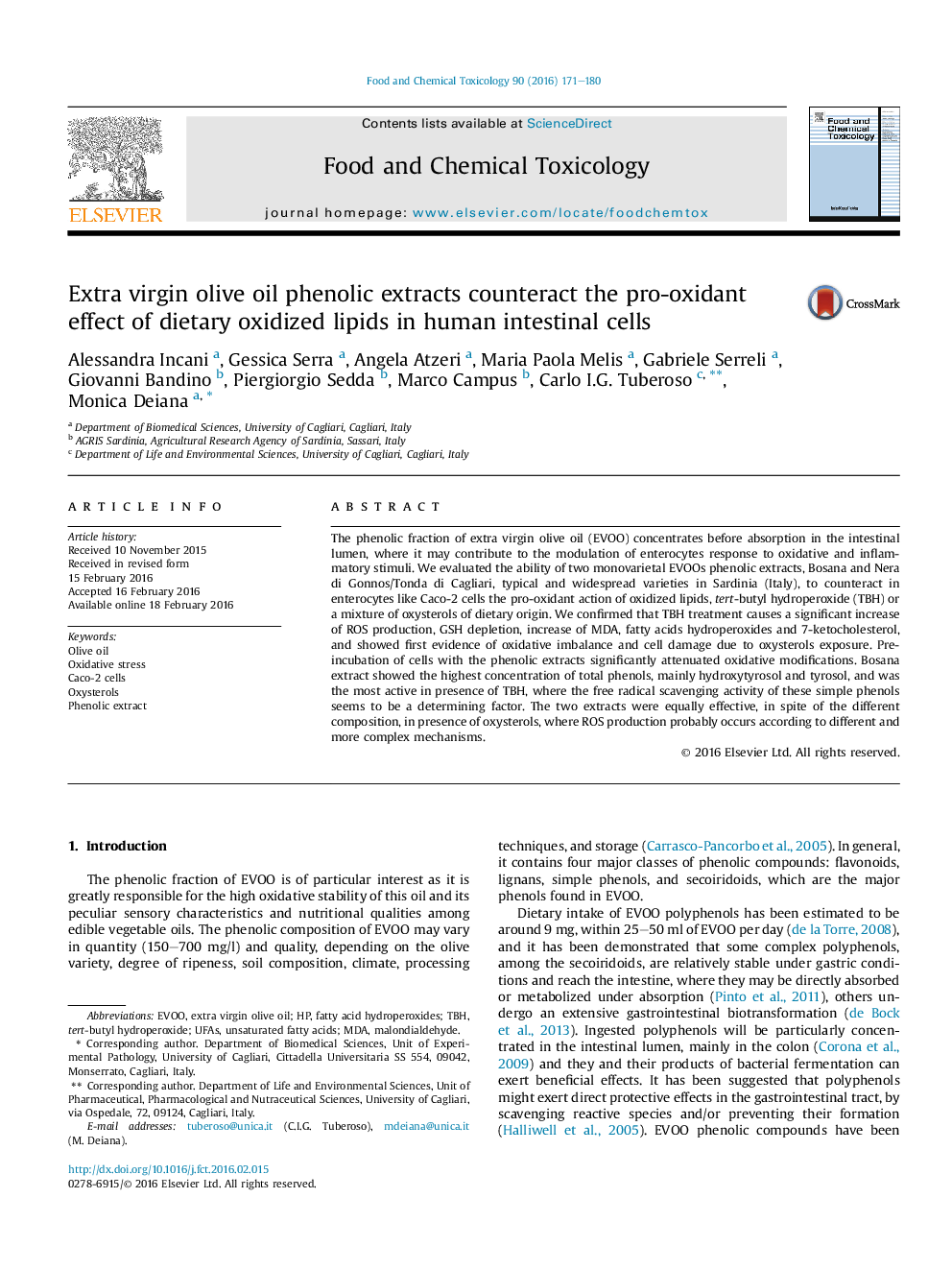| Article ID | Journal | Published Year | Pages | File Type |
|---|---|---|---|---|
| 2584864 | Food and Chemical Toxicology | 2016 | 10 Pages |
•Two olive oil phenolic extracts were tested in Caco-2 treated with TBH and oxysterols.•Both TBH and oxysterols induced oxidative imbalance, ROS increase and GSH depletion.•Membrane lipid peroxidation was highlighted by MDA, hydroperoxydes, 7-keto detection.•A significant protective effect of both the extracts was pointed out.•Extracts activity was correlated to the phenolic content and to the oxidizing agent.
The phenolic fraction of extra virgin olive oil (EVOO) concentrates before absorption in the intestinal lumen, where it may contribute to the modulation of enterocytes response to oxidative and inflammatory stimuli. We evaluated the ability of two monovarietal EVOOs phenolic extracts, Bosana and Nera di Gonnos/Tonda di Cagliari, typical and widespread varieties in Sardinia (Italy), to counteract in enterocytes like Caco-2 cells the pro-oxidant action of oxidized lipids, tert-butyl hydroperoxide (TBH) or a mixture of oxysterols of dietary origin. We confirmed that TBH treatment causes a significant increase of ROS production, GSH depletion, increase of MDA, fatty acids hydroperoxides and 7-ketocholesterol, and showed first evidence of oxidative imbalance and cell damage due to oxysterols exposure. Preincubation of cells with the phenolic extracts significantly attenuated oxidative modifications. Bosana extract showed the highest concentration of total phenols, mainly hydroxytyrosol and tyrosol, and was the most active in presence of TBH, where the free radical scavenging activity of these simple phenols seems to be a determining factor. The two extracts were equally effective, in spite of the different composition, in presence of oxysterols, where ROS production probably occurs according to different and more complex mechanisms.
